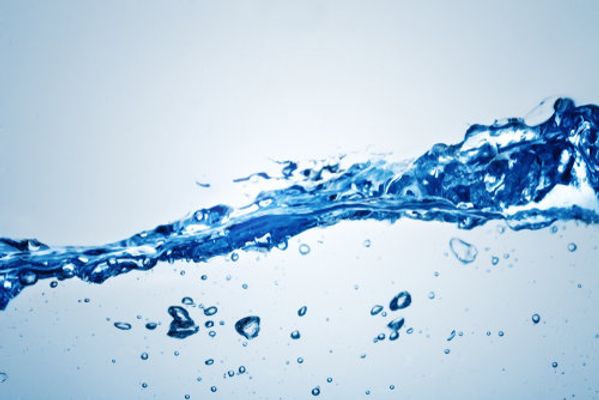4.1.1
Fluid Mosaic Model
Structure and Function of Cell Membranes
Structure and Function of Cell Membranes
The fluid mosaic model describes the structure of the plasma membrane as a mosaic of phospholipids, cholesterol, proteins, and carbohydrates. This gives the membrane a fluid character.


Function of the plasma membrane
Function of the plasma membrane
- The plasma membrane defines the borders of cells and most organelles.
- The plasma membrane is partially permeable. This means that the membrane allows some materials to freely enter or leave the cell/organelle, while other materials cannot move freely.


Structure of phospholipids
Structure of phospholipids
- A phospholipid is a molecule consisting of glycerol, two fatty acids, and a phosphate-linked head group.
- The molecules arrange themselves into a bilayer which ranges from 5 to 10 nm in thickness.
- The hydrophilic phospholipid head faces outwards and the hydrophobic fatty acids faces inwards.


Structure of cholesterol
Structure of cholesterol
- Cholesterol is a lipid that sits with phospholipids in the core of the membrane.
- Cholesterol is not found in bacterial cell membranes.
- Cholesterol molecules make the membrane more rigid.
- This explains why cholesterol helps to maintain the shape of animal cells.


The Fluid Mosaic Model
The Fluid Mosaic Model
- The phospholipid bilayer forms the ‘fluid’ part of the ‘fluid mosaic’ model.
- The ‘mosaic’ part is made up from the various proteins, carbohydrate and lipid molecules that punctuate membranes.


Function of membrane bound proteins
Function of membrane bound proteins
- Membrane bound proteins are large molecules embedded in the bilayer, they can form open pores that allow the diffusion of large molecules across the bilayer or can be transport proteins that bind to specific molecules and carry them across the membrane.
- ATP-synthase is an example of a membrane bound protein and catalyses the production of ATP during oxidative phosphorylation on the inner mitochondrial membrane.


Function of glycoproteins and glycolipids
Function of glycoproteins and glycolipids
- Some proteins and lipids in cell membranes have carbohydrate chains attached to them.
- These chains are vital in interacting with the cell’s immediate environment.
- Some glycolipids and glycoproteins are able to form hydrogen bonds with water molecules surrounding the cell, helping to stabilise the membrane.


Cell receptors
Cell receptors
- Other glycolipids and glycoproteins act as cell signalling receptors and have active binding sites for communication molecules such as hormones and drugs.
- When these receptors bind a target molecule, the glycomolecule undergoes a conformational change and initiates a chain of reactions known as a cascade that can lead to a cell-level response to the binding of certain signalling molecules.
The permeability of cell membranes
The permeability of cell membranes
The permeability of cell membranes- how easy it is for substances to pass through them – can be influenced by several factors including:


Temperature
Temperature
- Higher temperatures increase the fluidity of the membrane, increasing its permeability.
- Using a water bath can help keep temperature constant.


Solvent concentration
Solvent concentration
- The more easily the phospholipid bilayer is dissolved, the more permeable the membrane is.
- Solvent concentration can be controlled by using the same solvent at the same concentration for each trial.


pH
pH
- pH affects the protein structure in the cell membrane.
- Buffer solutions can be used to control the pH.
Investigating Cell Membrane Permeability
Investigating Cell Membrane Permeability
Beetroot is often used as a model because the release of the coloured pigment is easy to quantify using colorimetry. The steps involved are:


1) Collect beetroot samples
1) Collect beetroot samples
- Use a cork borer to collect samples of uniform diameter.
- Cut discs of a uniform depth using a sharp scalpel on a white tile and rinse in cold water. This removes excess pigment that has leaked through physically broken cell membranes.


2) Add ethanol
2) Add ethanol
- Prepare at least five concentrations of ethanol (e.g. 0%, 10%, 20%, 30%, 40%) in beakers.
- Place the discs into the corresponding solution for 10 minutes.
- Make sure the samples are completely covered by the ethanol solutions and mixed frequently throughout the 10 minutes.


3) Remove the discs
3) Remove the discs
- Remove the discs from the solutions to prevent further changes and allow a fair comparison between the experiments.


4) Calibrate the colorimeter
4) Calibrate the colorimeter
- Calibrate a colorimeter by using a cuvette of distilled water at an absorbance of 520nm.
- The cuvettes must be dry and the clear sides must not be touched to prevent potential errors in the readings.


5) Measure absorbance
5) Measure absorbance
- Measure the absorbance of each solution.
- Plot the results in a graph with concentration on the x-axis and absorbance on the y-axis.
- The darker the solution, the more pigment has been released. This is reflected in a higher reading for absorbance.
1Cell Structure
1.1Cell Structure
1.1.1Studying Cells - Microscopes
1.1.2Introduction to Eukaryotic & Prokaryotic Cells
1.1.3Ultrastructure of Eukaryotic Cells
1.1.4Ultrastructure of Eukaryotic Cells 2
1.1.5Ultrastructure of Eukaryotic Cells 3
1.1.6Prokaryotic Cells
1.1.7Viruses
1.1.8End of Topic Test - Cell Structure
1.1.9Exam-Style Question - Microscopes
1.1.10A-A* (AO2/3) - Cell Structure
2Biological Molecules
2.1Testing for Biological Modules
2.2Carbohydrates & Lipids
2.3Proteins
3Enzymes
4Cell Membranes & Transport
4.1Biological Membranes
5The Mitotic Cell Cycle
6Nucleic Acids & Protein Synthesis
6.1Nucleic Acids
7Transport in Plants
8Transport in Mammals
8.1Circulatory System
8.2Transport of Oxygen & Carbon Dioxide
9Gas Exchange
9.1Gas Exchange System
10Infectious Diseases
10.1Infectious Diseases
10.2Antibiotics
11Immunity
12Energy & Respiration (A2 Only)
13Photosynthesis (A2 Only)
14Homeostasis (A2 Only)
14.1Homeostasis
14.2The Kidney
14.3Cell Signalling
14.4Blood Glucose Concentration
14.5Homeostasis in Plants
15Control & Coordination (A2 Only)
15.1Control & Coordination in Mammals
15.1.1Neurones
15.1.2Receptors
15.1.3Taste
15.1.4Reflexes
15.1.5Action Potentials
15.1.6Saltatory Conduction
15.1.7Synapses
15.1.8Cholinergic Synnapses
15.1.9Neuromuscular Junction
15.1.10Skeletal Muscle
15.1.11Sliding Filament Theory Contraction
15.1.12Sliding Filament Theory Contraction 2
15.1.13Menstruation
15.1.14Contraceptive Pill
15.2Control & Co-Ordination in Plants
16Inherited Change (A2 Only)
16.1Passage of Information to Offspring
16.2Genes & Phenotype
17Selection & Evolution (A2 Only)
17.2Natural & Artificial Selection
18Classification & Conservation (A2 Only)
18.1Biodiversity
18.2Classification
19Genetic Technology (A2 Only)
19.1Manipulating Genomes
19.2Genetic Technology Applied to Medicine
19.3Genetically Modified Organisms in Agriculture
Jump to other topics
1Cell Structure
1.1Cell Structure
1.1.1Studying Cells - Microscopes
1.1.2Introduction to Eukaryotic & Prokaryotic Cells
1.1.3Ultrastructure of Eukaryotic Cells
1.1.4Ultrastructure of Eukaryotic Cells 2
1.1.5Ultrastructure of Eukaryotic Cells 3
1.1.6Prokaryotic Cells
1.1.7Viruses
1.1.8End of Topic Test - Cell Structure
1.1.9Exam-Style Question - Microscopes
1.1.10A-A* (AO2/3) - Cell Structure
2Biological Molecules
2.1Testing for Biological Modules
2.2Carbohydrates & Lipids
2.3Proteins
3Enzymes
4Cell Membranes & Transport
4.1Biological Membranes
5The Mitotic Cell Cycle
6Nucleic Acids & Protein Synthesis
6.1Nucleic Acids
7Transport in Plants
8Transport in Mammals
8.1Circulatory System
8.2Transport of Oxygen & Carbon Dioxide
9Gas Exchange
9.1Gas Exchange System
10Infectious Diseases
10.1Infectious Diseases
10.2Antibiotics
11Immunity
12Energy & Respiration (A2 Only)
13Photosynthesis (A2 Only)
14Homeostasis (A2 Only)
14.1Homeostasis
14.2The Kidney
14.3Cell Signalling
14.4Blood Glucose Concentration
14.5Homeostasis in Plants
15Control & Coordination (A2 Only)
15.1Control & Coordination in Mammals
15.1.1Neurones
15.1.2Receptors
15.1.3Taste
15.1.4Reflexes
15.1.5Action Potentials
15.1.6Saltatory Conduction
15.1.7Synapses
15.1.8Cholinergic Synnapses
15.1.9Neuromuscular Junction
15.1.10Skeletal Muscle
15.1.11Sliding Filament Theory Contraction
15.1.12Sliding Filament Theory Contraction 2
15.1.13Menstruation
15.1.14Contraceptive Pill
15.2Control & Co-Ordination in Plants
16Inherited Change (A2 Only)
16.1Passage of Information to Offspring
16.2Genes & Phenotype
17Selection & Evolution (A2 Only)
17.2Natural & Artificial Selection
18Classification & Conservation (A2 Only)
18.1Biodiversity
18.2Classification
19Genetic Technology (A2 Only)
19.1Manipulating Genomes
19.2Genetic Technology Applied to Medicine
19.3Genetically Modified Organisms in Agriculture
Unlock your full potential with Seneca Premium
Unlimited access to 10,000+ open-ended exam questions
Mini-mock exams based on your study history
Unlock 800+ premium courses & e-books